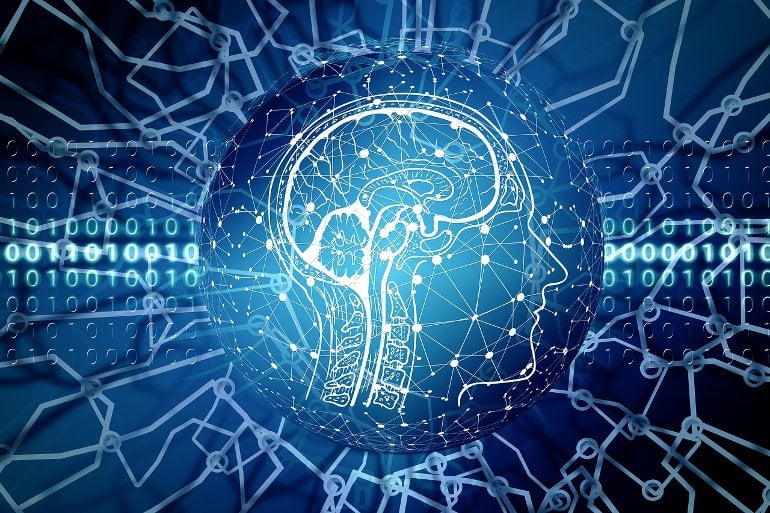Summary: A novel deep studying methodology that makes use of graph convolutional neural networks (gCNNs) can predict cognitive operate primarily based on the mind’s dimension and construction. The algorithm might present insights into the connection between mind morphology and totally different cognitive features, in addition to declines in cognitive operate.
Source: Northwestern University
Northwestern investigators have developed a deep learning-based methodology that may predict cognitive operate capability primarily based on mind form and construction, detailed in a research revealed in Scientific Reports.
The methodology, which makes use of graph convolutional neural networks (gCNNs), might also reveal new insights into the connection between mind morphology and totally different cognitive features in addition to the decline of mind operate.
“When we apply the rich capabilities of CNNs to graph representation of the brain, we can explore the brain as an image in a previously unexplored way,” mentioned S. Kathleen Bandt, MD, assistant professor of Neurological Surgery and a co-author of the research.
Understanding how the connection between mind construction and cognitive operate modifications all through the life course has remained elusive. However, earlier work means that fluid intelligence—the power to drawback remedy and assume and motive abstractly—relies upon closely on two areas of the mind: the prefrontal cortex and parietal cortex, each of that are concerned in decision-making and sensory notion, amongst different features.
Furthermore, investigating the affiliation between mind construction and cognitive operate might present extra details about mind maturation and getting older, in addition to the physiological causes of cognitive impairment.
In the present research, the investigators developed novel gCNNs, a specialised deep studying mannequin that extracts distinct morphological options comparable to cortical thickness and subcortical construction from transformed mind MRI scans to foretell fluid intelligence.
“We are reducing the brain to its surfaces only, meaning that we are able to capture information not only about folding patterns, but also about curvature and relationships between surfaces across tens of thousands of nodes including the outer cortical surface, the inner cortical surface and the surface of seven subcortical brain structures,” Bandt mentioned.
Using their novel gCNNs, the scientists extracted morphologic info of cortical ribbons and subcortical constructions from two massive MRI datasets involving sufferers from totally different age teams.
Using this strategy, the investigators have been in a position to display that their mannequin considerably outperformed different comparable state-of-the-art strategies and that utilizing a mix of cortical and subcortical constructions supplied probably the most correct predictions.
Additionally, throughout each datasets, they discovered that structural options of the amygdala, hippocampus and nucleus accumbens (NAc), together with temporal, parietal and cingulate cortex, drove the fluid intelligence prediction.

“Prior work investigating the neuroanatomic substrate of fluid intelligence has identified associations between widespread cortical areas, but relatively few relationships have been reported with subcortical structures.
“Our study added to these studies by identifying involvement of the bilateral NAc, hippocampus in the prediction of fluid intelligence, which have been linked to the aspects of cognitive science such as reward processing in judgment and decision-making as well as emotion regulation,” mentioned Yunan Wu, Ph.D., a graduate pupil within the McCormick School of Engineering’s Department of Electrical and Computer Engineering and lead writer of the research.
According to the authors, their surface-based gCNNs provide the chance to map recognized relationships between neurocognition and mind anatomy for myriad analysis functions. The methodology additionally requires much less coaching time and computations, making it extra environment friendly to use to different complete datasets.
For instance, one other current research led by Bandt used gCNN evaluation for getting older and dementia, discovering that the tempo of mind getting older differs between wholesome people and sufferers with dementia.
“We are now looking to see if similar cognitive measures can be predicted using this method as has been done in our work here on fluid intelligence, but also can we predict the onset of dementia and potentially prevent or delay it before it starts,” Bandt mentioned.
About this deep studying and cognition analysis information
Author: Melissa Rohman
Source: Northwestern University
Contact: Melissa Rohman – Northwestern University
Image: The picture is within the public area
Original Research: Open entry.
“A multicohort geometric deep learning study of age dependent cortical and subcortical morphologic interactions for fluid intelligence prediction” by Yunan Wu et al. Scientific Reports
Abstract
A multicohort geometric deep studying research of age dependent cortical and subcortical morphologic interactions for fluid intelligence prediction
The relationship of human mind construction to cognitive operate is complicated, and the way this relationship differs between childhood and maturity is poorly understood.
One sturdy speculation suggests the cognitive operate of Fluid Intelligence (Gf) relies on prefrontal cortex and parietal cortex.
In this work, we developed a novel graph convolutional neural networks (gCNNs) for the evaluation of localized anatomic form and prediction of Gf. Morphologic info of the cortical ribbons and subcortical constructions was extracted from T1-weighted MRIs inside two impartial cohorts, the Adolescent Brain Cognitive Development Study (ABCD; age: 9.93 ± 0.62 years) of kids and the Human Connectome Project (HCP; age: 28.81 ± 3.70 years).
Prediction combining cortical and subcortical surfaces collectively yielded the best accuracy of Gf for each ABCD (R = 0.314) and HCP datasets (R = 0.454), outperforming the state-of-the-art prediction of Gf from another mind measures within the literature.
Across each datasets, the morphology of the amygdala, hippocampus, and nucleus accumbens, together with temporal, parietal and cingulate cortex persistently drove the prediction of Gf, suggesting a big reframing of the connection between mind morphology and Gf to incorporate programs concerned with reward/aversion processing, judgment and decision-making, motivation, and emotion.














Discussion about this post